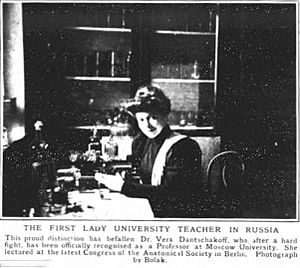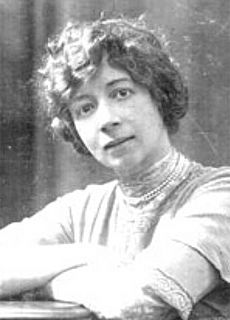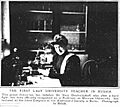Vera Danchakoff facts for kids
Vera Mikhaĭlovna Danchakoff (born Grigorevskaya, March 21, 1879 – September 22, 1950) was a Russian anatomist, cell biologist, and embryologist. In 1908, she became the first woman in Russia to be named a professor. She was a pioneer in stem cell research. She moved to the United States in 1915. There, she was a leading scientist who believed that all types of blood cells come from one single type of cell. People sometimes call her "the mother of stem cells." She later went back to Europe to continue her important research.
Contents
Early Life and Education
Vera Danchakoff was born in St Petersburg, Russia. Her parents wanted her to study music or art. But Vera had other plans! She left home to get a degree in natural sciences. After that, she went to Lausanne University to study medicine. She finished her medical degree in 1906.
When she returned to Russia, she earned another medical degree at Kharkov University. Then, she made history again! She became the first woman to earn a doctorate in medical sciences at the St Petersburg Academy of Medicine. This was Russia's first medical college for women.
She got married, and her daughter, Vera Evgenevna, was born in 1902 in Zurich. Her daughter later studied at Columbia University and married Mikhail Lavrentyev, a famous mathematician.
Helping Others and Family Life
In 1915, Danchakoff moved to the United States. She was very active in helping people. She wrote for a Moscow newspaper called Utro Rossi (Russian Morning) from New York. She also helped the American Relief Administration. She shared how hard it was for scientists to work in Russia during and after the Great War and the Bolshevik Revolution.
During the Russian famine of 1921–22, many scientists in Russia were struggling. Danchakoff asked for food parcels to be sent to them. She shared letters she received from her science friends in Russia. Even though they were famous around the world, they were called "lazy" and were starving.
New York had a large community of Russians who had moved there. Vera and her husband often hosted big parties for their friends. Vera was also a very good piano player. She joined musical evenings with Juan and Olga Codina, who were professional singers. She even looked after their daughter, Lina, when her parents were away. Lina later married the famous composer Serge Prokofiev.
Scientific Career and Discoveries
In 1908, Vera Danchakoff became an assistant professor at Moscow University. She taught histology (the study of tissues) and embryology (the study of how living things develop before birth). This made her the very first woman professor in Russia!
In 1915, she moved to the United States. She first worked at the Rockefeller Institute for Medical Research in New York City. Then, she worked at the Columbia University College of Physicians and Surgeons. There, she was an "instructor in anatomy." This was a time when women were just starting to be allowed to study there.
In a lecture in 1916, she said something amazing:
"... the erythrocytes (red blood cells), the small lymphocytes, the different leucocytes (white blood cells), the wandering cells of the connective tissue, the mast cells, and the plasma cells - all these cells are different cell units, but in the early stages of life they all had a common mother cell. This mother cell stays in the adult body and helps new cells grow and heal."
—Vera Danchakoff
Marshall Lichtman, a scientist, called her lecture "extraordinary." He said that scientists spent the rest of the century learning more about her ideas!
The "Mother of Stem Cells"
Some people say that one of Danchakoff's papers was the first to use the term "stem cell." For example, she wrote: "These stem cells develop on the one hand into the small lymphocytes, and on the other hand into granulocytoblasts, and further into granulocytes." We now know that hematopoietic stem cells (blood stem cells) create all other blood cells.
Because of her important work, Danchakoff is sometimes called the "mother of stem cells." However, another scientist, Alexander A. Maximow, used the German word "Stammzelle" (which means stem cell) in 1909. He used it for the same idea in his paper about lymphocytes.
In 1916, Danchakoff and James Bumgardner Murphy made a surprising discovery about chick embryos. They found that when adult lymphocytes were injected into an embryo, its spleen grew much larger. This did not happen with other types of cells. Their first ideas about why this happened were not quite right. But much later, these observations helped scientists understand how lymphocytes move around the body and how "graft-versus-host disease" works.
By 1919, Danchakoff was a full professor of anatomy at Columbia's College of Physicians and Surgeons.
In 1934, she left Columbia. Until 1937, she worked at the Lithuanian University of Health Sciences. In 1938, she did important experiments where she gave testosterone to female guinea pig babies before they were born.
Danchakoff wrote many books and scientific papers. One of her last papers, published in 1950, was about how certain chemicals affect pregnant guinea pigs and their babies.
Images for kids
See also
 In Spanish: Vera Danchakoff para niños
In Spanish: Vera Danchakoff para niños







